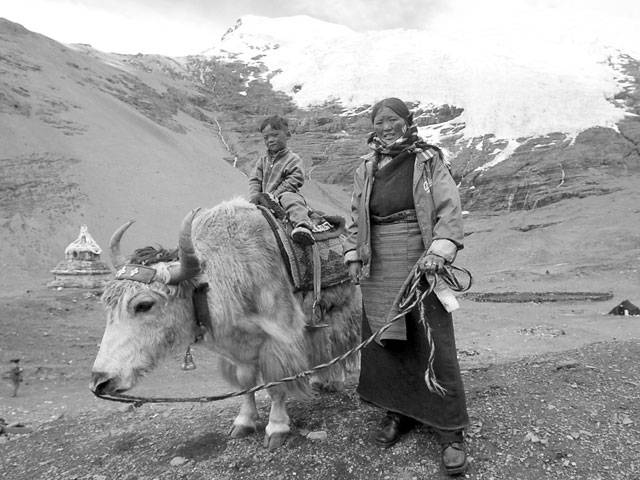AFP
PARIS
Tibetans are able to live at high altitude thanks to a special gene they inherited from a mysterious, now-extinct branch of the human family, scientists reported on Wednesday. The ancestors of today’s Tibetans acquired a key variant of a gene regulating oxygen in the blood when they mated with a species of human called the Denisovans, they said. Contemporaries of the Neanderthals - and like them, possibly wiped out by anatomically modern man, Homo sapiens - the Denisovans first came to light only four years ago. Their existence was determined through a piece of finger bone and two molars unearthed at the Denisova Cave in southern Siberia’s Altai Mountains and dated to some 80,000 years ago. Genetic sequencing found that before the Denisovans disappeared as a separate branch, they intermingled with H. sapiens, leaving traits that survive in the human DNA pool today. In a study published in the journal Nature, scientists in China, Tibet and the United States compared the genomes of 40 ethnic Tibetans and 40 ethnic Han Chinese. Buried in the Tibetans’ gene code is an unusual variant of a gene called EPAS1 which regulates production of haemoglobin, the molecule that hauls oxygen around the blood, they found.
Wednesday, April 17, 2024
Tibetans’ high-altitude skills came via extinct cousin

Caption: Tibetans’ high-altitude skills came via extinct cousin
Pride and hype as F1 roars back to China after Covid absence
10:36 PM | April 16, 2024
No let-up in Karachi street crime incidents
10:35 PM | April 16, 2024
Stock market today: Most of Wall Street weakens again as Treasury yields rise more
10:34 PM | April 16, 2024
Muslim K-popstar Daud Kim buys land to build mosque in South Korea
10:33 PM | April 16, 2024
Punjab Stadium unavailability derails National Challenge Cup 2023 Final Round
10:28 PM | April 16, 2024
Political Reconciliation
April 16, 2024
Pricing Pressures
April 16, 2024
Western Hypocrisy
April 16, 2024
Policing Reforms
April 15, 2024
Storm Safety
April 15, 2024
Democratic harmony
April 16, 2024
Digital dilemma
April 16, 2024
Classroom crisis
April 16, 2024
Bridging gaps
April 16, 2024
Suicide awareness
April 15, 2024
ePaper - Nawaiwaqt
Advertisement
Nawaiwaqt Group | Copyright © 2024





